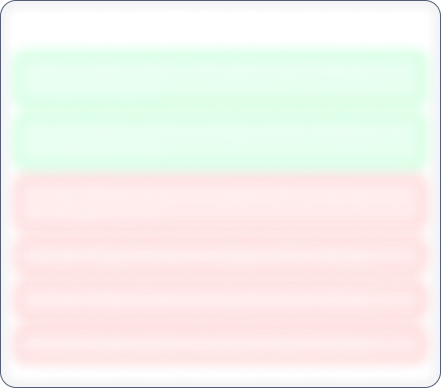Get 50% OFF This Monsoon!
Northern Spirits

No Data Available
Investor Sentiment
Northern Spirits Share price and Fundamental Analysis
Key Metrics
Stock Returns
Stock Heatmap

No Stocks
Smart Score

Unlock Smart Score
See Detailed Analysis & Insights


Unlock Insights
See Detailed Analysis & Insights
Technicals
Returns Calculator
If you would have investedResearch Report
No Research Report
Corporate Action
Financials
Key Ratios
ROE
Avg ROE (3 Yrs) : NaN%
ROCE
Avg ROCE (3 Yrs) : NaN%
ROA
Avg ROA (3 Yrs) : NaN%
NPM
Avg NPM (3 Yrs) : NaN%
Dividend History
5 Year FactSheet
Documents

No Data Available
News
Northern Spirits Management and History
Company Management


Unlock Management Data
See Detailed Analysis & Insights
Company History
Northern Spirits Limited was originally incorporated as a private limited company with the name Northern Spirits Private Limited at Kolkata on September 13, 2012. Subsequently the Company was converted into a Public Limited Company and the name of the Company was changed to Northern Spirits Limited on May 03, 2018.
Northern Spirits chose New Delhi (NCR) as its business capital, the paradise that constantly brews promises for the liquor entrepreneurs. NCR cherishes the pride of a trendsetting alcohol consumption pattern that has inspired Northern Spirits to select New Delhi as the starting point And the best thing is that it has been enjoying a business growth of 40% YOY for last 4years.
The Promoters of Northern Spirits have a commendable experience of more than 35 years that includes: A strong start in Punjab since 1975 and then in Maharashtra through Wine Enterprises' since 1991. In the year 2002-03 the entrepreneurial Journey of the promoters, commenced in the state of West Bengal, through its Group concern United Wines' whose Proprietor is Mr. Anuj Bakshi.
This background lays the foundation for Northern Spirits Ltd to be a Pan-Indian operator along with key indicators which instill confidence within its channel partners. NSL is adorned with experienced office, Commendable sales persons and experts and efficient professional managers.
United Wines a sole proprietorship firm (proprietor Mr. Anuj Bakshi ) started its operations as Distributor of Alcoholic Beverages in 2002 and was focusing mainly into IMFL brands in Eastern region and whereas Northern Spirits Ltd started it operations in 2012 as Importer & Distributor of fine Alcoholic Beverages and is focused in imports of leading international brands such as William Grants ( Glenfiddich Single Malt, Grants Whisky, Monkey Shoulder Whisky, Balvenie Single Malt, Hendricks Gin), Bacardi Global ( Grey Goose Vodka, Bombay Sapphire Gin, Dewar's Whisky, Martini Vermouth), Shepherd Neame Beer, Amigos Beer, Carlo Rossi California Wines, Tomich Australian Wines, Cooper's Australian Beer, West Cork irish Whiskey, Two Tree Gin, Reddot Wheat Beer, Aqua Riva Mexican Tequila & Organika Russian Vodka and are distributing the same in Northern Region - Delhi, North East, West Bengal and as a strategic move decided to integrate the business for better corporate governance and Compliance.
On 1st April 2018 United Wines was merged with Northern Spirits Limited.
Northern Spirits Share Price
Northern Spirits share price reflects investor sentiment toward the company and is impacted by various factors such as financial performance, market trends, and economic conditions. Share price is an indicator which shows the current value of the company's shares at which buyers or sellers can transact.
Northern Spirits Market Cap
Market capitalization of Northern Spirits indicates the total value of its outstanding shares. Marketcap is calculated by multiplying share price and outstanding shares of the company. It is a helpful metric for assessing the company's size and market Valuation. It also helps investors understand how Northern Spirits is valued compared to its competitors.
Northern Spirits PE Ratio
Northern Spirits PE ratio helps investors understand what is the market value of each stock compared to Northern Spirits 's earnings. A PE ratio higher than the average industry PE could indicate an overvaluation of the stock, whereas a lower PE compared to the average industry PE could indicate an undervaluation.
Northern Spirits PEG Ratio
The PEG ratio of Northern Spirits evaluates its PE ratio in relation to its growth rate. A PEG ratio of 1 indicates a fair value, a PEG ratio of less than 1 indicates undervaluation, and a PEG ratio of more than 1 indicates overvaluation.
Northern Spirits ROE (Return on Equity)
Return on Equity (ROE) measures how effectively Northern Spirits generates profit from shareholders' equity. A higher ROE of more than 20% indicates better financial performance in terms of profitability.
Northern Spirits ROCE (Return on Capital Employed)
Return on Capital Employed (ROCE) evaluates the profitability of Northern Spirits in relation to its capital employed. In simple terms, ROCE provides insight to investors as to how well the company is utilizing the capital deployed. A high ROCE of more than 20% shows that the business is making profitable use of its capital.
Northern Spirits Total Debt
Total debt of Northern Spirits shows how much the company owes to either banks or individual creditors. In simple terms, this is the amount the company has to repay. Total debt can be a very useful metric to show the financial health of the company. Total debt more than equity is considered to be a bad sign.
Northern Spirits Debt to Equity Ratio
The Debt-to-Equity (DE) ratio of Northern Spirits compares its total debt to shareholders' equity. A higher Debt to Equity ratio could indicate higher financial risk, while a lower ratio suggests that the company is managing its debt efficiently.
Northern Spirits CAGR (Compound Annual Growth Rate)
CAGR shows the consistent growth rate of Northern Spirits over a specific period, whether it is over a month, a year, or 10 years. It is a key metric to evaluate the company’s long-term growth potential. Main metrics for which CAGR is calculated are net sales, net profit, operating profit, and stock returns.
Northern Spirits Technical Analysis
Technical analysis of Northern Spirits helps investors get an insight into when they can enter or exit the stock. Key components of Northern Spirits Technical Analysis include:
Support Levels (S1, S2, S3)
There are usually multiple support levels, but the main support levels for a stock are S1, S2, S3. Support levels indicate price points where stock might get support from buyers, helping the stock stop falling and rise.
Resistance Levels (R1, R2, R3)
There are usually multiple resistance levels, but the main resistance levels for a stock are R1, R2, R3. Resistance levels represent price points where Northern Spirits shares often struggle to rise above due to selling pressure.
Northern Spirits Dividends
Dividends refer to the portion of the company’s profits distributed to its shareholders. Dividends are typically paid out in cash and reflect Northern Spirits ’s financial health and profitability.
Northern Spirits Bonus Shares
Bonus shares are usually given by companies to make the stock more affordable, increase liquidity, boost investor confidence, and more.
Northern Spirits Stock Split
Stock split increases the number of its outstanding shares by dividing each existing share into multiple shares. When the company offers a stock split, the face value of the stock reduces in the same proportion as the split ratio.
Northern Spirits Financials
The financials of Northern Spirits provide a complete view to investors about its net sales, net profit, operating profits, expenses, and overall financial health. Investors can analyze financial data to assess the company’s stability and also understand how the company has been growing financially.
Northern Spirits Profit and Loss Statements
The profit and loss statement of Northern Spirits highlights its net sales, net profit, total expenditure, and operating profits in the current financial year. This Profit and Loss statement is crucial for evaluating the profitability and financial stability of Northern Spirits .
Northern Spirits Balance Sheet
The balance sheet presents a snapshot of Northern Spirits ’s assets, liabilities, and equity of shareholders, providing insights into the financials of the company.
Northern Spirits Cashflow Statements
Cashflow statements track the company's cash inflows and outflows over a period. It is an essential tool for understanding how well the company manages its liquidity and finances.


